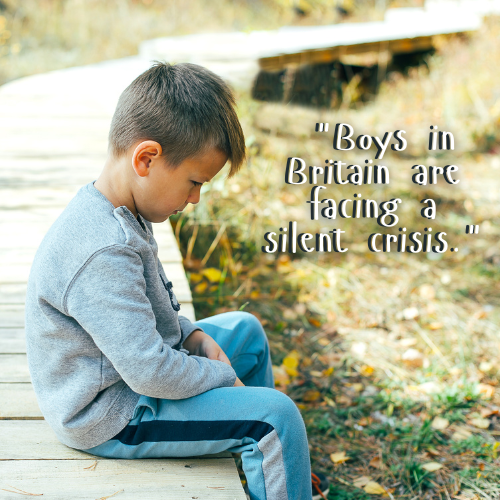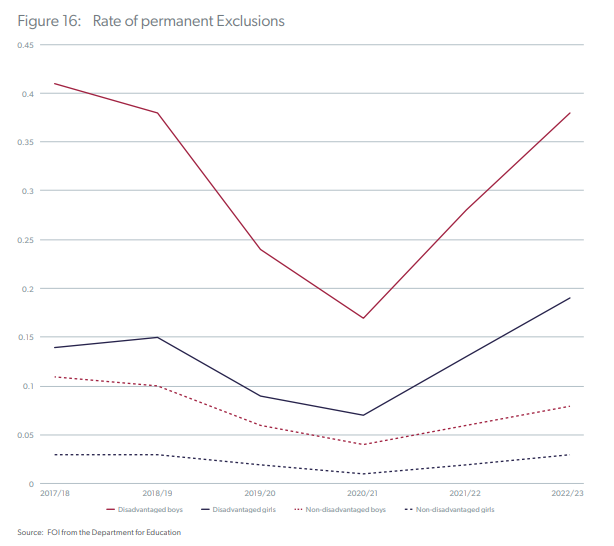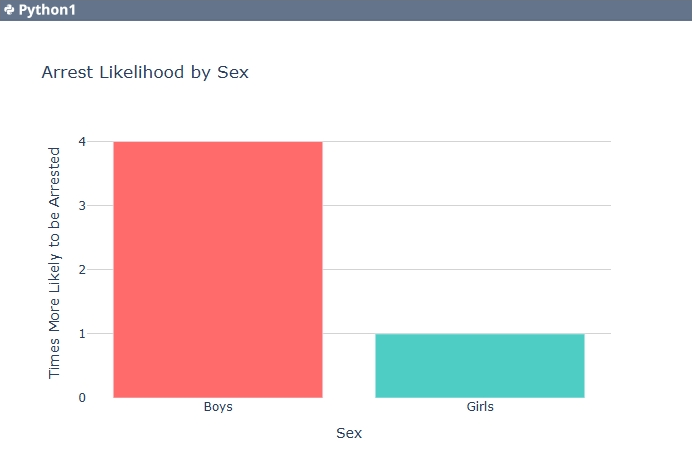The Lost Boys: A Crisis Facing Britain’s Young Men

In March 2025, the Centre for Social Justice (CSJ) released a ground-breaking report titled The Lost Boys, shedding light on the alarming challenges facing boys and young men in Britain today.
While the past century has seen significant strides in outcomes and rights for women, this generation of boys—particularly those from disadvantaged backgrounds—is being left behind. This article explores the key findings of the report, backed by stark statistics, and calls for urgent action to address this growing crisis.
Education: Falling Behind at Every Stage
The educational attainment gap between boys and girls is widening at an alarming rate. The CSJ report highlights that boys are outperformed by girls at every level of education, from early years to higher education.
- Only 66% of boys achieved a good level of development in the Early Years Foundation Stage in 2023, compared to 77% of girls.
- At GCSE level, just 68% of boys achieved grades 9 – 4 (A** – C) in English and Maths in 2023, compared to 73% of girls.
- Boys are half as likely as girls to attend university, with only 41% of 18-year-old boys entering higher education compared to 56% of girls.
This educational disparity sets the stage for lifelong challenges, particularly for boys from poorer backgrounds and certain ethnic groups, such as White working-class and Black Caribbean boys, who fare worse than their peers.
Exclusion and Discipline: A Pipeline to Failure
Boys are disproportionately disciplined and excluded from school, often leading to a downward spiral of disengagement and lost opportunities.
- Boys are twice as likely as girls to be suspended from school, accounting for 75% of all suspensions in 2022/23.
- Permanent exclusions are even more skewed, with boys making up 83% of those expelled.
The report notes that excluded boys are more likely to become involved in crime or face unemployment later in life, underscoring the need for early intervention and support rather than punitive measures.

One submission to the parliamentary commission on White Working Class boys:
“We note the findings of mental health researchers who observe that boys in emotional mental
distress tend to use coping strategies which externalise into violence and destruction while girls are
more likely to internalise into self-harm and depression. It is our contention that the routine practice
of exclusions is discriminatory and used as an easier alternative to humane interventions on mental
health and emotional distress, and that this must change.”
Employment and Economic Disadvantage
The challenges boys face in education translate into the workforce, where young men are increasingly struggling to find stable employment.
- Young men aged 16-24 are more likely to be unemployed (13.8%) than young women (10.6%) in 2024.
- Among poor White boys, only 17% of those eligible for free school meals go on to sustained employment or education after GCSEs, compared to 27% of poor White girls.
The CSJ argues that the lack of role models, coupled with declining opportunities in traditional male-dominated industries, leaves many young men without a clear path forward.

Mental Health and Suicide: A Silent Epidemic
Perhaps the most harrowing finding of the report is the state of boys’ and young men’s mental health. Societal pressures, isolation, and a lack of support are taking a devastating toll.
- Suicide is the leading cause of death for men under 50, with males accounting for 75% of all suicides in 2023.
- Boys are less likely to seek help, with only 25% of those with mental health issues accessing services, compared to 35% of girls.
Autism Spectrum Disorder and Attention Deficit Hyperactivity Disorder
Boys are significantly more likely to have a diagnosis of ADHD than girls. Estimates range from a ratio
of 2:1 to 10:1. By 2018, the proportion of ADHD diagnoses was 255 per 10,000 boys and 67.7 per
10,000 girls.

Prescription rates from 2000-2018 doubled for boys and quadrupled for girls. Although this is an increasingly medicalised neurodevelopmental disorder for both boys and girls,181 it remains that boys are far more likely to have the condition.
Anecdotally, many charities who run Capitalise Alternative Provision and parents who have children with ADHD have told the CSJ how misunderstood and badly recognised such conditions are, especially with aggressive or poor behaviour often displayed by these boys. They often relayed how isolated and internet obsessed these children can become.
Crime and Violence: A Vicious Cycle
Boys, particularly from disadvantaged communities, are both victims and perpetrators of crime at alarming rates.
- Boys are four times more likely than girls to be arrested, making up 85% of youth arrests in 2023.
- In London, 94% of knife crime offenders in 2023 were male, with Black boys disproportionately represented.

The CSJ warns that without intervention, these patterns of violence and incarceration will perpetuate a cycle of poverty and despair.
The Path Forward: A Call to Action
The Lost Boys report is not just a diagnosis of a problem—it’s a clarion call for solutions. The CSJ plans to spend the coming months researching and advocating for policies to reverse these trends. Key areas of focus include:
- Education reform: Tailored support for boys in schools, including mentorship programs and alternative learning pathways.
- Mental health services: Increased funding and outreach specifically targeting young men.
- Community investment: Job training and opportunities in disadvantaged areas to break the cycle of unemployment and crime.
Conclusion
The crisis facing Britain’s boys and young men is undeniable. As the CSJ report starkly illustrates, this is not just a matter of individual struggle but a societal failure that demands urgent attention. By addressing the root causes—education, mental health, employment, and crime—we can ensure that the next generation of boys is not lost but empowered to thrive.
The overarching message is one of urgency: without intervention, the widening gap between boys and girls, particularly among the most disadvantaged, will have long-term societal consequences. The report serves as both a warning and a call to action for policymakers and communities to address this overlooked issue.
For the full report, visit: The Lost Boys – Centre for Social Justice.
